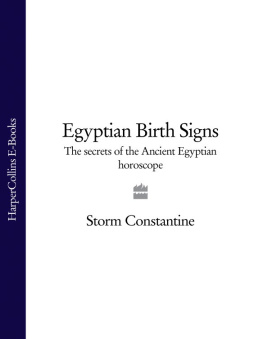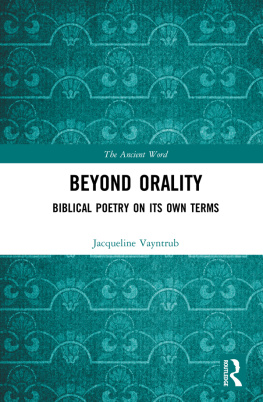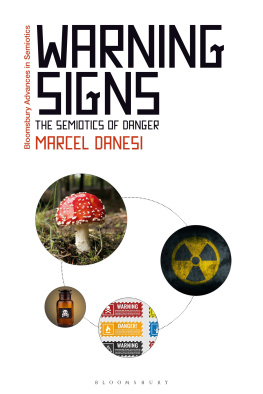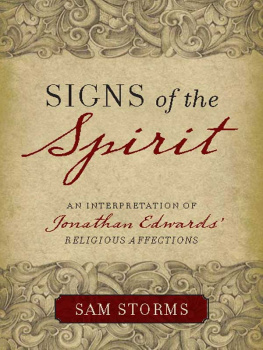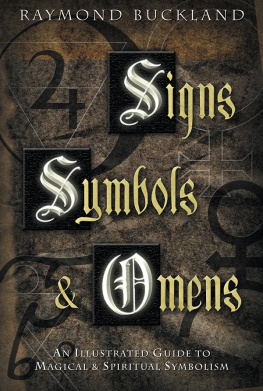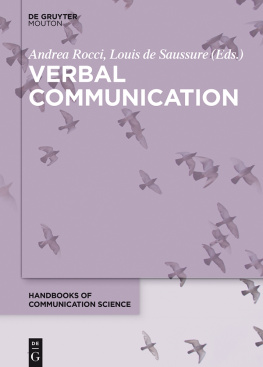Semiotics of Religion
Edited by
Massimo Leone
Fabio Rambelli
Robert Yelle
Volume
Religion and Reason
Theory in the Study of Religion
Edited by
Jacques Waardenburg
Gustavo Benavides
Michael Stausberg
Ann Taves
Volume
ISBN 9783110768596
e-ISBN (PDF) 9783110768602
e-ISBN (EPUB) 9783110768626
Bibliographic information published by the Deutsche Nationalbibliothek
The Deutsche Nationalbibliothek lists this publication in the Deutsche Nationalbibliografie; detailed bibliographic data are available on the Internet at http://dnb.dnb.de.
2022 Walter de Gruyter GmbH, Berlin/Boston
For Noah and Gideon
Acknowledgments
Earlier versions of Chapter One appeared in Signs and Society 6; of Chapter Two in Robert Yelle, Courtney Handman, and Christopher Lehrich (eds.), Language and Religion, and Jenny Ponzo, Robert A. Yelle, and Massimo Leone (eds.), Mediation and immediacy: A key issue for the semiotics of religion; and of Chapter Five in Jason van Boom and Thomas-Andreas Pder (eds.), Sign, Method, and the Sacred: New directions in semiotic methodologies for the study of religion.
I would like to thank Richard Parmentier, Cale Johnson, Flagg Miller, Seth Sanders, Courtney Handman, Robert Yelle, Nancy Felson, Archana Venkatesan, Jenny Ponzo, and the late Michael Silverstein. I would also like to thank Kenton Goldsby, Aron Tillema, and Roberto Delgadillo for research support, Juliana Froggatt, Paul Psonios and Jonathan Grayson for copy editing, and my writing partner Ulrike Strasser.
Introduction: Explaining and Misunderstanding How Signs Work
Everyone who uses words has ideas about how language works. The Kalapalo of Brazil emphasize the deceptive capacity of language, since the speaker may be lying (, 301).
Ideas about words, referred to as in this study as a linguistic ideology, influence every aspect of culture. ). As Michael Silverstein has pointed out in a series of foundational articles, these ideologies are based on a partial awareness that speakers have about the multifunctionality of language and how it encodes truths about the world. Silverstein explains, The conscious native-speakers sense of the transparency of the universe to representation by ones own language, and perhaps to language in general, is a function of (a) languages fashions of speaking, through which the universe makes itself manifest to the speaker and which thus guide the conscious, common sense of the representational systems (2000, 99).
Ideas about language influenced ancient understandings of everything from divinity to truth. These ideas are also the basis for the models used in the modern study of religion. The recycling of ancient ideas is not always made explicit, because models drawn from language appear to simply reveal the nature of whatever aspect of culture is being modeled. Three brief examples help clarify this point. First, , 75). We learn a great deal about how academics construct their arguments but less about the tremendous cross-cultural variation in the use and meaning of all sorts of pseudo-definitions.
Second, Any linguistic model must become part of a hardscrabble causal chain supported by very real power in order to make one voice dominate others.
Our third example highlights how hard it is to avoid recycling a linguistic ideology into a theory of ritual or even a model for truth. Roy ). The efficacy of ritual is inseparable from the efficacy of signs, and only a very finely tuned semiotic model can avoid recycling specific linguistic ideologies as theory and can account for the multifunctionality of signs and their contested interpretations.
The approach taken in this study addresses these problems directly by outlining a robust semiotic approach which necessitates a review of the theoretical assumptions. This study builds upon Silversteins linguistic ideology as incorporated into a broader concept of semiotic ideology (). Semiotics refers to signs, non-verbal as well as verbal. In order to understand how all types of signs are employed in religious settings, this study works simultaneously in two directions: first, it examines ancient, and in the last chapter, modern, ideas about the uses of words and nonverbal signs; and second, it maps how these ideas reappear in contemporary analysis of religion. These ancient Near Eastern, Jewish, Christian, and Greco-Roman examples present language as able to do more than just refer to objects. Explicit debates about sign functions, for example, articulate which words and objects were thought to either be able, or be proper, to stand for deities and what types should not (idolatry). The ancient ideas cast long shadows and continue to shape modern analysis of ritual, religion, and culture. Looking very carefully at the modern reuse of these ideas demonstrates how they both support and limit the study of religion.
This study does not offer anything near to a complete history of the selected ancient evidence. It does not, for example, claim to offer more than a small sample of ideas about the divine name in Jewish texts. Every reader will be able to think of a string of additional examples. Each ancient example is chosen because it illustrates a particular and intriguing idea about a sign or because the ancient idea weighs heavily in recent theorizing.
The approach here is semiotic, the study of signs. As the study itself makes clear, the methods for studying sign meaning are far from monochromatic. This study is built on a very specific approach, and one purpose of this introduction is to clarify this approach. Semiotics here is dependent on the wealth of studies produced by Charles S. Peirce. The sheer breadth and constant revision of his thought has resulted in vastly different appropriations of his research. , 27) offers a concise formulation of metapragmatic function:
In an event of metapragmatic semiosis, the object (language) consists of a snippet of language in use and the metalinguistic comment describes the degree to which this use of language is effective, felicitous, powerful and so forth, rather than describing its semantic value.
Silversteins theory of the multi-functionality of language offers a very different approach to issues of performativity. The contextual implications of sign use, and especially of some words that appear to do things, has become a major preoccupation but only in a very narrowly conceived version of such debates. Scholars of religion, recognizing that liturgical formulas are not primarily referential (propositional), readily adopted John The theory of performativity, Richard Bauman and Charles Briggs explain, has rested on a literal force hypothesis that posits a one-to-one correlation between performative utterances and illocutionary forces, even if most theorists admit that surface forms frequently do not directly signal illocutionary force (1990, 62).
The same is true of all the speech-act theories that derive from Austins work, including John , 8).
In other words, the notion of performativity is a way of trying to capture the creative capacity of signs, and it needs to be understood as part of a general theory of signs. Every effective use of language and signs is dependent on socially constructed rules of use. These ideologies are what Austin was trying to capture when he added all sorts of modifiers to his basic notion of performative (illocutionary, perlocutionary, etc.). The illocutionary force and perlocutionary effects of courtroom testimony, as Bauman and Briggs explain, are highly dependent, for example, on evidentiary rules and broader semiotic frames that specify admissible types of relations to other bodies of written and oral discourse (1990, 64).


